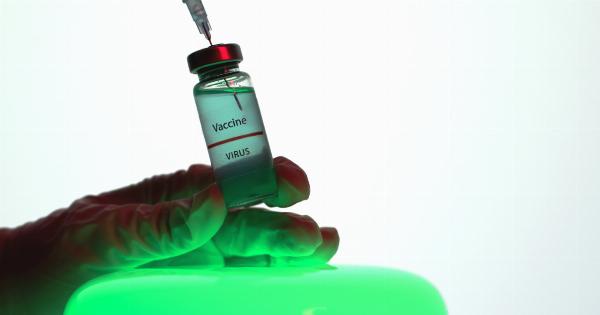HIV (Human Immunodeficiency Virus) is a deadly virus that attacks the immune system of the human body and destroys the CD4 lymphocytes. It spreads through body fluids such as blood, semen, vaginal secretions, and breast milk.
The virus can lead to serious complications such as AIDS (Acquired Immunodeficiency Syndrome), which makes it difficult for the body to fight infections and other diseases. Currently, there is no complete cure for HIV, but antiretroviral therapy (ART) can slow down the progression of the virus and prevent the onset of AIDS.
However, the high cost and the possible side effects of these drugs make them inaccessible to ordinary people, especially in developing countries.
The Emergence of Silver Nanoparticles as a Potential Antiviral Agent
Silver nanoparticles (AgNPs) have emerged as a potential antiviral agent in recent years. AgNPs are tiny particles of silver with a diameter less than 100nm.
They have unique physical, chemical and biological properties that make them suitable for various applications such as diagnostic imaging, drug delivery, and antimicrobial agents. Many studies have demonstrated that AgNPs have potent antiviral activity against herpes simplex virus, influenza virus, hepatitis B virus, and HIV. This article will focus on the use of AgNPs as a new approach to combat HIV.
How Do Silver Nanoparticles Work Against HIV?
The mechanism of action of AgNPs against HIV is not fully understood. However, many studies have suggested that AgNPs can inhibit the replication and entry of the virus into human cells.
HIV enters human cells by binding to the CD4 receptors on the surface of T-lymphocytes and macrophages. Once the virus is inside the cell, it uses the host cell machinery to replicate and produce new viruses.
AgNPs can interfere with this process by binding to the viral protein, glycoprotein 120 (gp120), which is responsible for binding to the CD4 receptor and fusion of the viral envelope with the host cell membrane. The binding of AgNPs to gp120 inhibits the interaction between the virus and the host cell, thus preventing the replication of the virus.
Advantages of Silver Nanoparticles over Other Antiviral Agents
AgNPs have several advantages over other antiviral agents, such as ART drugs, which include:.
: 1. Lower Cost
The cost of producing AgNPs is significantly lower than that of producing ART drugs. This makes AgNPs more accessible to ordinary people, especially those living in developing countries.
: 2. Less Side Effects
AgNPs have fewer side effects compared to ART drugs, which can cause nausea, vomiting, diarrhea, and other gastrointestinal problems. AgNPs are also less toxic to human cells and have been shown to be safe for human use.
: 3. Broad-Spectrum Antiviral Activity
AgNPs have broad-spectrum antiviral activity, meaning they can inhibit the replication and entry of multiple viruses. This makes them a potential candidate for the development of a broad-spectrum antiviral drug.
Challenges in Using Silver Nanoparticles against HIV
Despite the promising results of studies on the antiviral activity of AgNPs against HIV, there are still several challenges that need to be addressed before they can be used as a mainstream treatment for HIV. Some of these challenges include:.
: 1. Standardization of Production
There is a need for standardized methods for the production of AgNPs to ensure their quality and safety. Different methods can produce AgNPs with different sizes, shapes, and surface charges, which can affect their biological activity and toxicity.
: 2. Optimization of Dosing and Administration
The optimal dose and frequency of AgNPs administration have not yet been established. More studies need to be done to determine the appropriate dosage and frequency to achieve maximum antiviral activity while minimizing toxicity to human cells.
: 3. Evaluation of Long-Term Effects
There is a need to evaluate the long-term effects of AgNPs on human health. Although AgNPs have been shown to be safe for human use in the short term, their long-term effects are not yet fully understood.
Conclusion
AgNPs have emerged as a potential new approach to combat HIV. They have demonstrated potent antiviral activity against HIV and may represent a cost-effective, safe, and broad-spectrum antiviral agent.
However, there are still several challenges that need to be addressed before they can be used as a mainstream treatment for HIV. More studies need to be done to optimize dosing and administration, standardize production methods, and evaluate the long-term effects of AgNPs. If these challenges are overcome, AgNPs may represent the next generation of antiviral agents against HIV.































